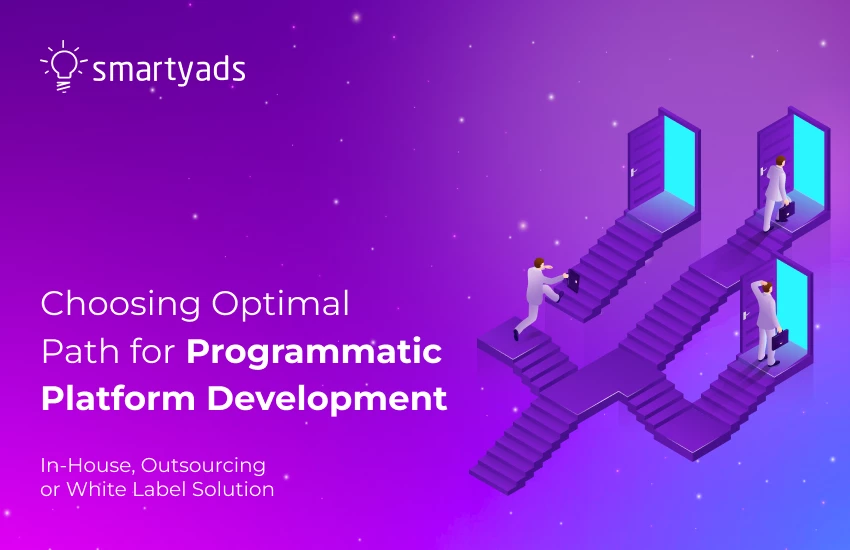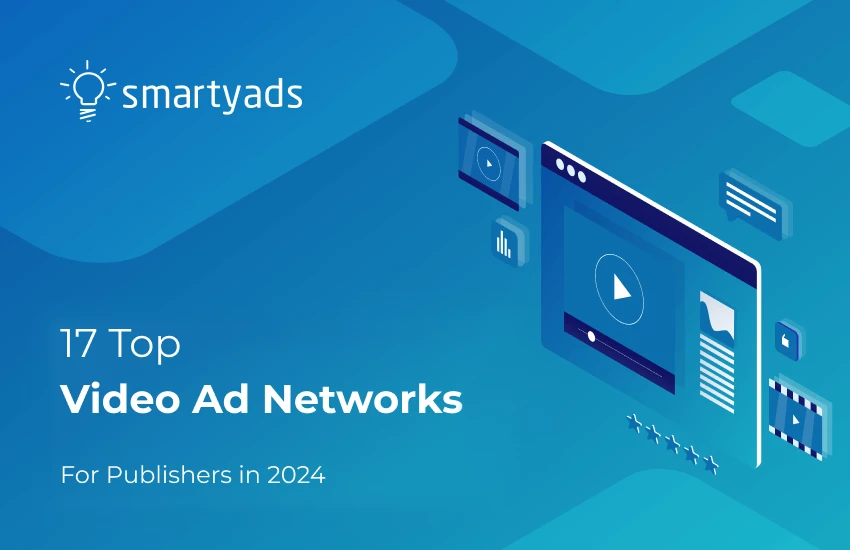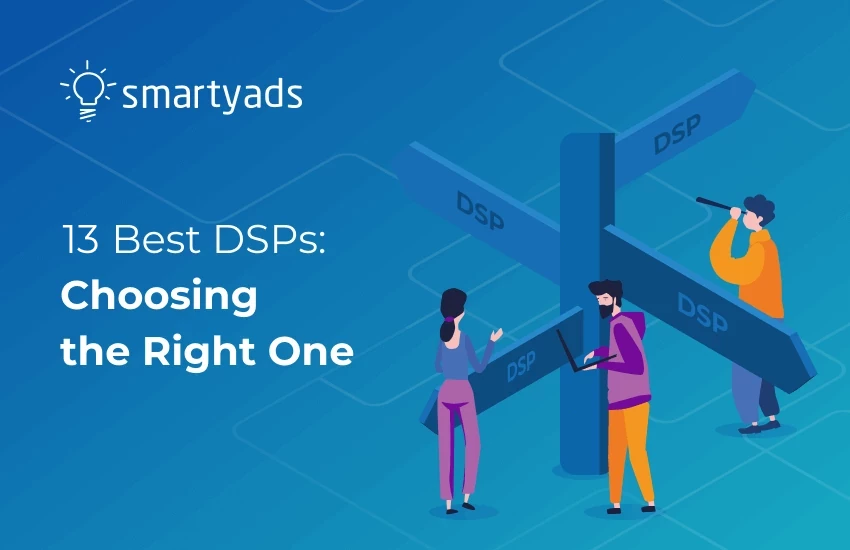Since programmatic advertising has entered the stage, it has been getting more and more popular. The growth in ad spending proves this — it is forecasted to reach $725 billion by 2026. In 2021, it was around $420 billion (worldwide).
The demand for this type of advertising has stimulated the development of programmatic platforms. In this guide, we will review three methods, including outsourcing, in-house, and white label, so that you will be able to choose the most suitable approach for you.
In-house approach
The definition of in-house methodology is pretty straightforward. The product is built by internal experts employed by your company. These can be professionals already working for you and those you hire after identifying your need for a specific solution. In any case, you get no external help.
When to prefer?
In-house platform building is a great option in the following cases:
- You want to fully control every team member and the project itself;
- You require seamless 24/7 support for your solution;
- You want to maintain the infrastructure on your own;
- You have all the essential experts on your team, including developers, testers, account managers, and others. Looking for new members can be time-consuming, which can be a decisive factor in case you need your product to be developed quickly;
- You have enough resources to allocate to the programmatic platform development. Note that these include not only experts but also time, money, tools, etc.
Nuances to consider
The in-house approach provides you with absolute control over all the processes; however, there are a couple of things to keep in mind.
First, in-house involves significant expenses, which can be critical for small companies. You may need to invest in training, purchase new tools, hire new employees, etc.
Secondly, you will do everything on your own. You will have to prepare a strategy, build your product from scratch, test and maintain it, and so on. This way, you will need a lot of time to get your product to the market.
Besides, if you have other core tasks, building a programmatic platform in-house can distract you from them. This approach requires absolute effort, meaning that your main business processes can be affected.
Outsourcing method
Outsourcing is a practice implying entrusting the development-related processes to another company, partially or in full. Obviously, certain tasks will still be your responsibility, like preparing a marketing strategy to promote your solution, but development, testing, and other technical challenges can be performed by a different business.
Outsourcing comes in three forms. The first one, onshoring, means partnering with a provider within your country. Nearshoring implies cooperating with a company from a neighboring country or at least in the same time zone. Offshoring is outsourcing to a distant location. For instance, if your company is located in the USA and you outsource to India, this is offshoring.
When to prefer?
Here are a few situations when outsourcing is the way to go:
- You have already identified all your requirements but have no time and desire to assemble an in-house team;
- You want to be involved only in the marketing and other operations not related to development;
- There are no ready-made solutions available for customization;
- When you need only the first version of the platform and are ready to maintain and update the product after it is ready;
- When your budget is rather tight and your in-house team is missing the required skills and tech stack. In the case of outsourcing, you will not have to invest in hiring and training processes, as well as subscribe to new tools.
Nuances to consider
Outsourcing is a cheaper approach than in-house, even though it still requires significant investments. Besides, you will be able to focus on your core tasks while the platform is still being built.
However, outsourcing also means less control over the project.
Another thing to keep in mind is possible communication issues. For example, the time difference may affect the processes if you outsource platform development to a significantly distant location. Your company and the selected provider will operate during different hours, so ensuring proper communication can be challenging.
Possible culture and language barriers may also impact your project. In turn, onshoring or nearshoring is usually more expensive than offshoring. Besides, finding a reputable provider can take a lot of time.
White label solutions
A white-label product is built by a different company. You can customize and rebrand it and then sell it to your users under a new name.
Compared to in-house and outsourcing, white label requires much less effort. For instance, if in-house usually means devoting 100% of your time to the development process, the white label allows you to save around 50% of monthly hours.
You will have an opportunity to work on your core business operations while your solution will be ready on short notice.
When to prefer?
Creating a programmatic platform with the white-label approach is the right choice in the following circumstances:
- If a ready-made solution is available on the market and meets your needs;
- When the deadlines are tight, and you need your solution to be ready as quickly as possible but still meet high-quality standards;
- You do not have your own development team and do not want to invest in hiring new professionals or training the already existing ones;
- When you need to cut expenses without compromising quality;
- If you want to reduce risks. A white-label product is already ready, meaning the number of glitches and bugs is minimized. It only has to be customized according to your requirements.
Nuances to consider
Basically, white labeling is the most cost-efficient approach to programmatic platform building. You save your time and money while still getting the required product quickly.
At the same time, you should keep in mind that white-label solutions are available not only to you but also to your competitors. Therefore, you need to pay special attention to customization. Research your rivals thoroughly and identify opportunities to overcome them and offer a more effective platform to your customers.
If you decide to choose white label approach to develop your platform, make sure to learn as much about your potential solution as you can. Review different features, including customization capabilities, data collection methods (remember, cookies are fading away), and so on.
How can SmartyAds help?
SmartyAds offers two customizable white-label solutions that you can use to build an advertising platform quickly. Let’s review both of them.
White Label DSP
With SmartyAds White Label DSP (a demand-side platform), you can allow advertisers to reach their audiences effectively. Created on the basis of artificial intelligence and already ready for the cookieless era, the solution offers the following features:
Contextual targeting and identity solution modules ensure efficient targeting;
- AI-powered keyword generation process;
- Machine learning capabilities for price optimization;
- Automatic optimization features to reduce manual work;
- Advanced reporting and analytics features;
- Compliance with privacy regulations;
- You are free to adapt the platform to your brand’s identity.
Apart from this, the platform is easy to scale, and SmartyAds also offers training sessions to help you reach your goals and get an effective programmatic platform.
White Label SSP plus Ad Exchange
Another solution is white-label SSP (a supply-side platform) plus ad exchange. Powered by machine learning algorithms and equipped with free all-in-one prebid capabilities, it allows you to create a required ad trading ecosystem for your customers. Here are some of the features to pay attention to:
- RCPM (real cost per mille) optimization enables ad delivery at the right time and to the right marketer;
- Adaptive margin allows for automated pricing decisions and ensures a more effective and competitive strategy;
- Win rate optimization features for boosting the auction and increasing chances of winning bids;
- Dynamic floor price mechanism to identify the minimum bid price and control pricing decisions for publishers’ and SSP’s traffic;
- Free of charge Prebid.js, Prebid Server, and Prebid Mobile adapters to make your platform even more effective;
- Identity link solutions integration ensures a seamless user experience and allows you to join a cookieless environment with ease;
- Real-time reporting capabilities;
- The selection of supply and demand partners is up to you;
- Enhanced user privacy and data security and complete data ownership;
- All the essential ad formats are available, including banner, video, native, rich media, and audio ads;
- The solution supports desktop, mobile web, in-app, CTV (connected TV), and OTT (over-the-top media services) ads;
To sum up
Making a choice between in-house, outsourcing, and white-label approaches should be done with your specific requirements and available resources in mind. Therefore, start with identifying your needs. What features do you want your platform to have? How quickly would you like it to get to the market? What is your budget?
After answering these and other relevant questions, consider analyzing the available white-label solutions. One of them may be able to meet your needs. If your desired product is too specific and you find nothing suitable, select between in-house and outsourcing.
Do SmartyAds white-label solutions sound like what you are in search of? Create your programmatic platform with ease!




